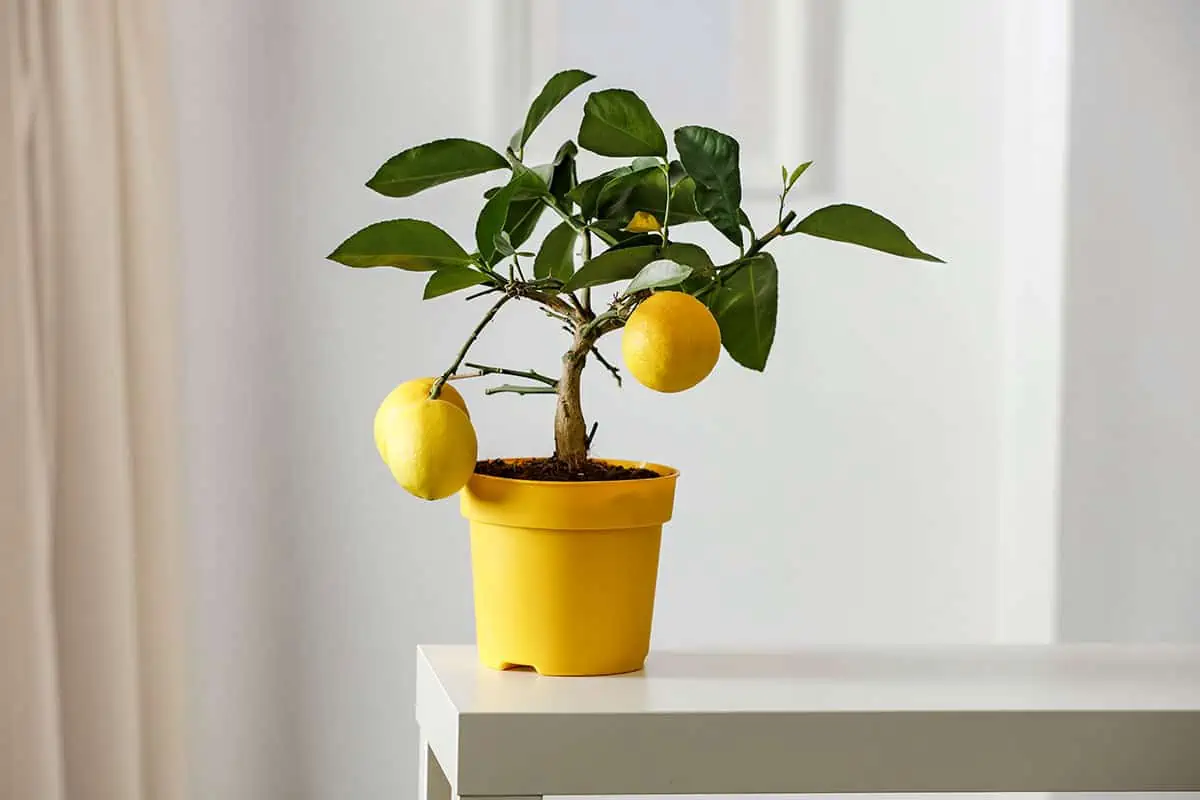Fresh lemonade made with sour, tart lemons is the perfect addition to a summertime barbeque. Are you tired of having to buy your fruit, year after year? Consider getting a lemon tree. Depending on the size and variety, you could have anywhere from a handful to several baskets of lemons every growing season.
Indoor lemon trees are some of the more common types of growing arrangements fruit-lovers have. Dwarf varieties are just a few feet tall. They can produce miniature or full-size lemons. Other types may grow over 10 feet tall. Just make sure you have a pot that’s sufficiently large enough for the root ball.
Key Takeaways
- Lemon trees can produce fruit in indoor environments, although they perform better when they spend at least some of the warmer months outside.
- Ponderosa and dwarf meyer varieties produce half the fruit that full-sized outdoor trees do, but they’re still formidable fruit producers.
- Ensure the best conditions for lemon growth by properly fertilizing, watering, and pruning your lemon tree.
Will an Indoor Lemon Tree Produce Fruit?
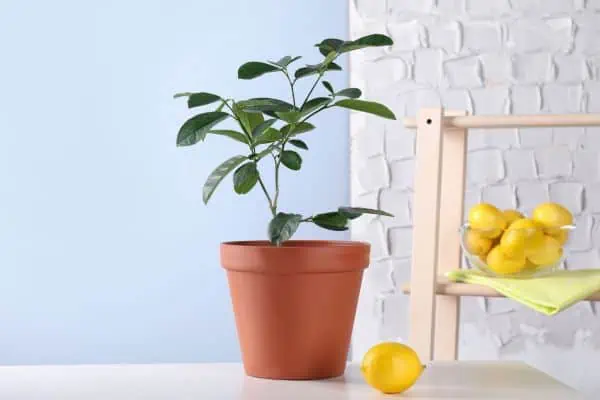
Yes, the typical lemon tree grown indoors will produce fruit. It’s important to keep the plant in the best health possible for quality fruit to grow. Make sure you’re watering, fertilizing, and pruning your lemon tree regularly. The quantity and quality of fruits depends on the species of tree as well as how it is cared for.
Lemon trees must have high amounts of light in order to produce the best fruit. As soon as temperatures get higher, consider giving it a field trip outdoors.
You don’t have to bring it in at night until the weather gets cold in the fall. High amounts of sunlight are so important to a lemon tree that even time on a balcony is better than being indoors 24/7.
How Long Does it Take for an Indoor Lemon Tree to Produce Fruit?
Lemon trees mature at a similar rate to other fruit trees. They take about four years before they will be ready to bloom and produce edible fruits.
Until then, make sure you keep them well-cared for. Bad growth conditions before a lemon tree is ready to produce can stunt its growth and increase the amount of time the tree needs before it can fruit.
After blooming, it takes between X and X months for the bloom to develop into the lemon. Lemons are
Are Lemon Trees Good Houseplants?
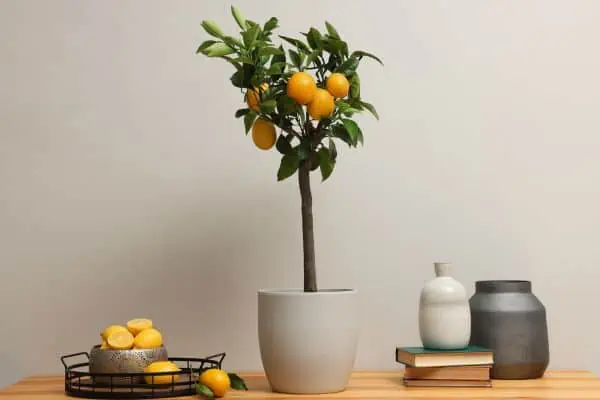
Lemon trees are a good option if you want a medium-effort houseplant that also provides delicious fruit. You’ll need to make sure that the plant gets at least 8 hours of direct sunlight per day. A south facing window is the best location to make this happen.
Do Lemon Trees Need Direct Sunlight?
Yes, indeed. Lemon trees are thoroughly tropical plants that grow best when they’re surrounded by light and heat. Naturally, their growth zones are best in USDA zones 9-11, but they can be grown in colder areas. You’ll just need to take them inside for the winter.
A sunroom or a garage can be great options to put the lemon tree in during cold weather. Since the tree doesn’t shed its leaves all at once, you can keep the lemon around the house. If you can, though, try to get your lemon tree outside.
Sunlight decreases dramatically in strength when it shines through a window. Your lemon tree is well-adapted to the rigors of bright sunlight. It actually needs intense light to grow strong and produce fruit.
How Big Do Indoor Lemon Trees Get?
Indoor lemon trees can range from 3 feet tall to over 10 feet tall. It depends primarily on what kind of variety of lemon you get. Dwarf species are a cross between a hardy rootstock and a sweeter, more delicious fruit.
Dwarf Meyer lemons are the most common type of lemon grown indoors. Lemons from the dwarf meyer are smaller than commercial lemons, but they still taste great.
It’s available as both a bush and a tree shape. Both shapes are the same species, just pruned into different habits.
Another type of lemon tree is the Ponderosa lemon. This tree can be planted outdoors or indoors. Unlike the dwarf lemon, this lemon’s claim to fame is the size of its fruit.
A single lemon can weigh up to two pounds, although most weigh about a pound.
How to Plant a Lemon Tree in A Container
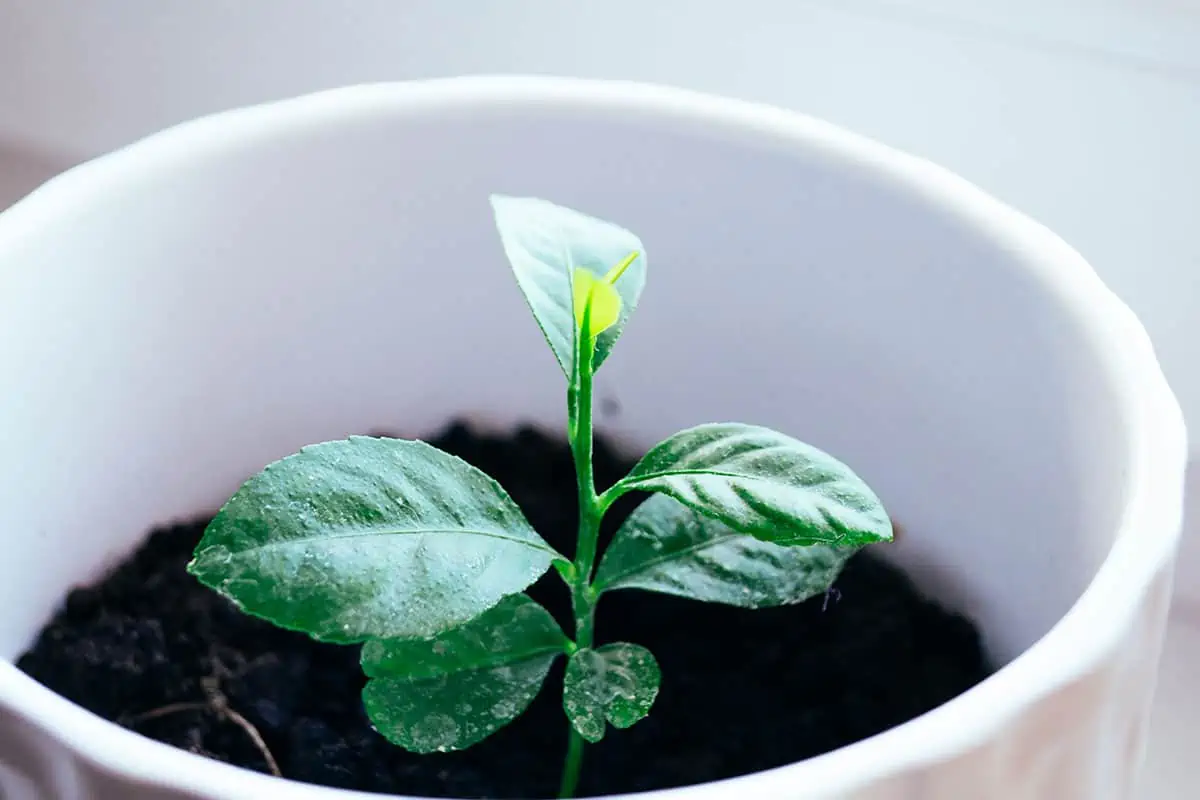
To plant a lemon tree in a container, you’ll first need a container of the appropriate size. Large trees should be 12 inches or more wide. We recommend using a circular container like a terracotta pot or heavy clay sides.
The heavy nature of the pot serves to prevent the plant from tipping over. Don’t forget to make sure that there are drainage holes at the bottom of the container. A good rule of thumb is to grab a bottom saucer to hold excess water.
Unlike many other houseplants, lemon trees actually like their roots to be slightly damp at all times. They don’t mind a lack of substrate either.
How to Fertilize an Indoor Lemon Tree?
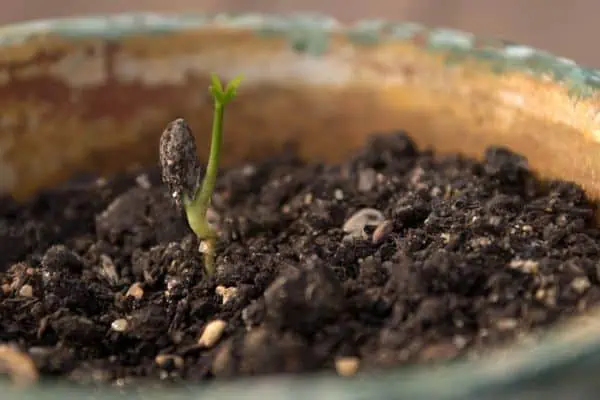
A lemon tree planted inside a container and kept indoors can be vulnerable to mineral deficiencies. There’s less sunlight available inside as well as more chances to be overwatered and run out of minerals.
That’s one reason why fertilizing your lemon tree is so important. Fertilizer spikes are easier to use than granules, especially if the container is small.
Acidic conditions are what lemon trees prefer most. You can increase the acidity of your soil by including peat. Also consider adding coffee grounds, but be careful – only a little at a time!
Conclusion
Lemon trees don’t discriminate between indoor and outdoor environments, but they do have preferences for soil, air, and moisture. While there will definitely be discrepancies between the lemon harvests from outdoor trees and indoor trees, the kind of harvest you glean from your lemon tree depends on how big it is, its health status, and how much space it has to spread out and absorb nutrients.
